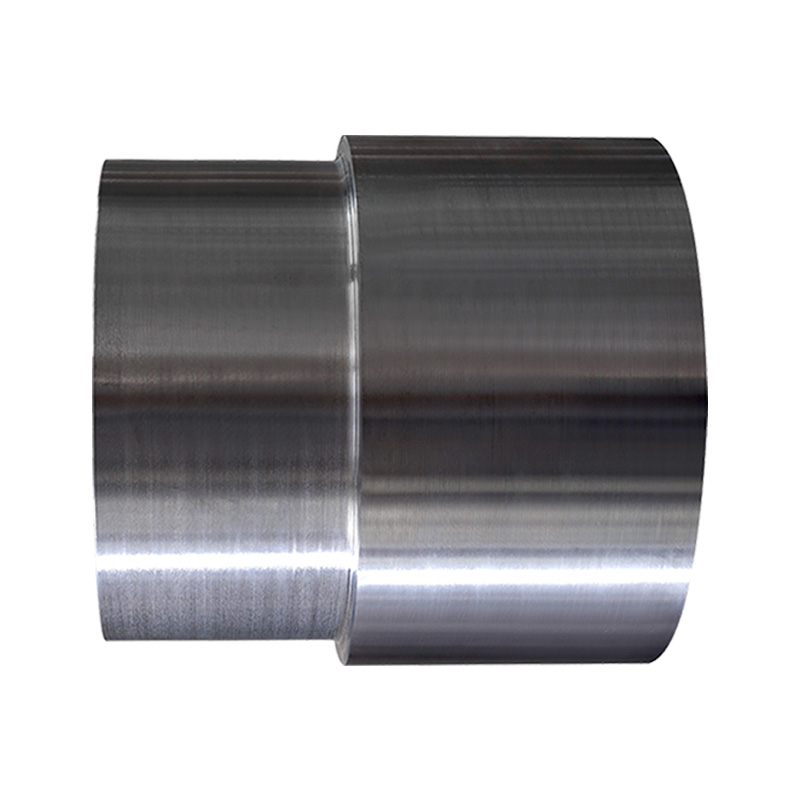1. Essential definition:
Alloy steel forgings are metal components formed through forging processes using alloy steel (with specific alloying elements added on top of ordinary carbon steel). It is not simply cast or machined, but repeatedly hammered and squeezed by forging hammers or presses to make the metal denser and more powerful inside.
2. Core features:
Alloy elements are the soul: adding chromium (Cr), nickel (Ni), molybdenum (Mo), manganese (Mn), vanadium (V) and other elements to enhance strength, toughness, wear resistance, corrosion resistance or high temperature resistance.
Forging is key: forging not only changes the shape, but also shatters coarse grains, compacts internal defects, and enables the material to withstand impact and fatigue far beyond castings or directly cut parts.
Customizable performance: By adjusting the alloy formula and heat treatment, it can accurately match different working conditions, such as wear-resistant mining machinery, lightweight and strong aerospace components, and corrosion-resistant chemical equipment.
3. Typical application scenarios:
Heavy duty structural components: excavator arms, gears/shafts of mining machinery must have high strength and fatigue resistance.
Wear resistant components: crusher hammer head, ball mill lining plate, which rely on the hardness and toughness of alloy steel to withstand ore wear.
Corrosion resistant environment: Chemical pumps and valves, marine platform components, using stainless steel alloy steel for rust and corrosion prevention.
Extreme working conditions: High temperature furnaces, ultra-low temperature equipment, relying on special alloy steel that does not soften or crack under harsh temperatures.
4. Difference from ordinary steel forgings:
Ordinary steel: mainly relies on carbon content to adjust performance, with low cost but limited capacity, and cannot do high demand work.
Alloy steel: like "adding external components", unlocking higher performance through alloy elements, at the cost of high cost and processing difficulties.
| Aspect | Alloy Steel Forgings | Key Differentiator vs. Plain Carbon Steel |
| Definition | Metal components made by forging alloy steel (steel + intentional alloying elements). | Not cast or machined – forged for superior density & grain structure. |
| Core Features | - Alloying elements (Cr, Ni, Mo, V, etc.) target specific performance upgrades.- Forging process eliminates voids, refines grain, enhances toughness.- Tailorable properties via chemistry + heat treatment. | Plain steel relies only on carbon content; limited capability spectrum. |
| Why Forged? | - Eliminates casting defects (porosity, inclusions).- Directional grain flow aligns with part stresses.- Better fatigue & impact resistance than cast/machined parts. | Cast parts are cheaper but weaker under cyclic loads. |
| Typical Uses | - Heavy structural parts (mining booms, gears, shafts).- Wear components (crusher hammers, mill liners).- Corrosion-resistant parts (pump housings, valves).- Extreme environments (high/low temp, high pressure). | Plain steel fails prematurely in demanding/harsh conditions. |
| Material Advantage | Alloys enable:- Higher strength-to-weight ratios.- Better wear/corrosion resistance.- Customized thermal/electrical properties. | Carbon steel is a blunt tool – alloys are precision solutions. |
| Trade-offs | - Higher material & processing costs.- More complex fabrication (welding, machining challenges).- Requires expert metallurgical control. | Plain steel wins for simple, low-stress applications. |

 英语
英语 德语
德语 阿拉伯语
阿拉伯语












